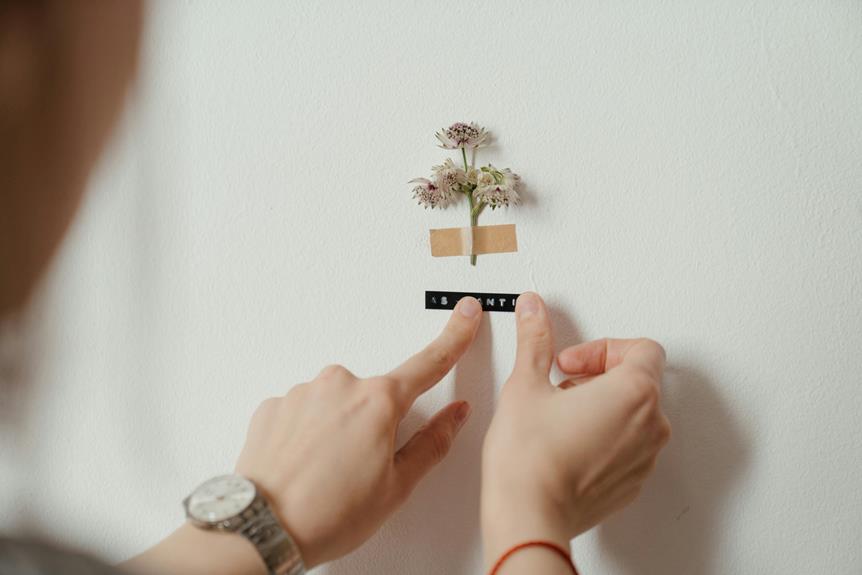If you're new to applique techniques, you'll find it an accessible and rewarding way to enhance your fabric projects. You'll start by stitching one fabric onto another, creating endless opportunities for creativity through various methods. Before you jump in, it's essential to gather the right tools and materials to ensure a smooth process. Understanding the basics will set you up for success, but knowing which fabrics to choose can make a significant difference in your results. Curious about how to make your first project stand out? Let's explore the key elements you need to get started.
Table of Contents
Key Takeaways
- Applique involves stitching one fabric onto another, with simple shapes like hearts or stars being ideal for beginners.
- Use cotton or cotton blends for easy handling and to prevent fraying during your projects.
- Experiment with different stitching techniques such as straight, zigzag, and buttonhole stitches to enhance your designs.
- Pre-wash and iron your fabrics to prevent shrinkage and ensure a smooth working surface before starting.
Understanding Applique Basics
Applique is a sewing technique where you stitch one fabric onto another, creating beautiful designs and adding texture to your projects. By using this method, you can transform ordinary fabrics into unique and eye-catching pieces. Understanding the basics of applique is essential for getting started.
First, you'll need to choose your fabrics. Consider using contrasting colors or patterns to make your design pop. You can also experiment with different textures to enhance the visual interest of your project. Once you have your fabrics, it's time to decide on a design. Simple shapes, such as hearts or stars, are great for beginners.
Next, you'll need to secure the fabric pieces before stitching. You can use temporary fabric adhesive or pins to hold them in place. This step is crucial as it prevents shifting while you sew.
When stitching, you have various techniques to choose from, such as straight, zigzag, or decorative stitches. Each stitch adds a different effect to your project. As you practice, you'll develop your unique style, allowing your creativity to shine through in every piece you create.
Essential Tools and Materials
When you're starting with applique, choosing the right fabric and tools is crucial.
You'll want to pick fabrics that complement each other while ensuring you have the basic cutting tools to create clean edges.
Let's explore the best options to set you up for success.
Fabric Choices and Types
Choosing the right fabric for your applique project often makes a significant difference in the final look and durability of your work. Start by considering the fabric type. Cotton is a popular choice due to its versatility and ease of handling. It comes in a variety of colors and prints, allowing you to express your creativity.
For a more textured look, consider using flannel or wool. These fabrics add depth and warmth to your designs. If you're aiming for something more durable, canvas or denim might be suitable options, especially for projects like bags or home decor items.
Next, think about the weight of your fabric. Lightweight fabrics like cotton lawn are great for delicate designs, while heavier fabrics provide structural support for larger pieces.
Don't forget about fabric blends. A cotton-polyester blend can offer the best of both worlds, combining softness with wrinkle resistance.
Lastly, always pre-wash your fabrics to avoid shrinkage and color bleeding later on. By choosing the right fabrics and understanding their properties, you'll set a solid foundation for your applique projects.
Basic Cutting Tools
Having the right cutting tools can significantly improve your precision and ease when working with various fabrics for your applique projects.
Start with a sharp pair of fabric scissors; they'll make clean cuts through multiple layers of fabric. Invest in a rotary cutter as well, which can speed up your cutting process, especially for straight lines.
You'll also need a cutting mat to protect your work surface and keep your rotary blade sharp. A clear acrylic ruler is essential for measuring and cutting straight edges accurately.
Don't forget about small, precision scissors for intricate details or tight curves in your designs; they help you achieve that polished look.
For best results, keep your tools well-maintained. Regularly sharpen your scissors and replace rotary blades to ensure you're always working with the best possible cutting edge.
Lastly, consider using a fabric marking tool to outline your shapes before cutting. This helps you visualize your design and reduces fabric waste.
With these basic cutting tools in hand, you're well on your way to creating beautiful applique projects!
Choosing Your Fabrics
Selecting the right fabrics is crucial for achieving the desired look and feel in your applique projects. When you choose your materials, consider factors like texture, weight, and color. Here are four key points to keep in mind:
- Fabric Type: Opt for cotton or cotton blends. They're easy to work with and won't fray excessively, making them perfect for beginners.
- Color Palette: Choose colors that complement each other. Think about the overall theme of your project and pick fabrics that reflect that vision.
- Scale of Patterns: If you're using patterned fabrics, consider the scale. Larger prints can overwhelm smaller designs, while tiny prints might get lost in more intricate work.
- Stability: Ensure your fabrics have similar weights to prevent shifting during application. Mixing heavy and light fabrics can create unwanted puckering.
Simple Applique Techniques
When you start with simple applique techniques, choosing the right stitch options is key to achieving a clean look.
You'll also want to prepare your fabric properly to ensure everything stays in place.
Let's explore these essential steps to make your applique projects a success.
Basic Stitch Options
You'll find that mastering basic stitch options is essential for creating clean and polished applique projects. Choosing the right stitch can make a significant difference in the overall look and durability of your work.
Here are four popular stitch options to consider as you begin:
- Straight Stitch: This is the simplest and most common stitch. It's perfect for securing your applique pieces and offers a clean finish.
- Zigzag Stitch: This stitch adds a decorative touch while also providing a strong hold. It works well for raw-edge applique, helping to prevent fraying.
- Blind Hem Stitch: Ideal for a nearly invisible finish, this stitch is great for hand-sewn applique. It's perfect for those projects where you want minimal visibility of the stitching.
- Buttonhole Stitch: This stitch adds a unique texture and visual interest. It's often used for decorative edges around your appliqued shapes.
Experimenting with these stitches will help you find the ones that suit your style and project needs. As you gain confidence, you'll discover how these basic options can elevate your applique creations!
Fabric Preparation Tips
Preparing your fabric properly sets the foundation for successful applique, ensuring that your pieces adhere well and look polished. Start by pre-washing your fabric to remove any sizing or residues that could interfere with adhesives. This step also prevents any shrinkage after you've applied your applique. Once your fabric is clean, iron it to eliminate wrinkles, giving you a smooth surface to work on.
Next, consider using a stabilizer. This can help prevent your fabric from puckering during stitching. Choose a lightweight stabilizer that suits your fabric type; for example, a tear-away stabilizer works well with cotton. Cut your stabilizer slightly larger than the area where you'll be applying the applique.
When cutting your applique pieces, use sharp scissors or a rotary cutter for clean edges. If you're using a fusible web, follow the manufacturer's instructions for the best results. Don't forget to trace your designs onto the paper side of the fusible web before cutting out your shapes.
Tips for Successful Stitching
To achieve clean and professional-looking stitches, always keep your fabric taut and your needle steady. This will help you maintain control and create neat lines.
Here are some tips to enhance your stitching skills:
- Choose the Right Needle: A sharp needle is essential. It should match your fabric type; for thicker fabrics, use a heavier needle.
- Use Quality Thread: Invest in high-quality thread that's less likely to fray or break. This will make your stitches more durable and visually appealing.
- Practice Your Technique: Before starting on your final project, practice your stitching on scrap fabric. This will help you get comfortable with the motion and tension.
- Keep Your Eyes on the Stitch Line: Focus on the area where you want to stitch. This will help guide your needle and improve accuracy.
Creative Project Ideas
Exploring creative project ideas can ignite your passion for applique and inspire unique designs that showcase your personal style. Start with simple projects like decorative pillows or tote bags. These items not only allow you to practice your skills but also result in functional pieces you can use or gift.
Consider creating a memory quilt using fabric scraps from old clothes or meaningful textiles. Each square can represent a cherished moment, making it a sentimental project. You might also try your hand at appliqued wall art. Choose your favorite quotes or images and bring them to life with fabric, adding a pop of color to your space.
If you're feeling adventurous, design a personalized piece for a child, like an appliqued blanket or clothing item featuring their favorite animals or characters. This not only showcases your creativity but also makes a thoughtful gift.
Lastly, explore seasonal decorations like holiday-themed banners or table runners. These projects can be a fun way to celebrate festivities while honing your applique techniques.
Don't hesitate to experiment and mix different fabrics; your imagination is the only limit!
Frequently Asked Questions
Can I Use Any Type of Fabric for Applique?
You can use various types of fabric for appliqué, but consider the weight and texture. Lightweight fabrics work well with lightweight appliqués, while heavier fabrics need more sturdy backing to ensure durability and proper adhesion.
How Do I Fix Mistakes in My Applique Work?
When you spot mistakes in your applique, don't panic! Carefully unpick the stitches or use a seam ripper. Then, reapply your fabric, ensuring it's correctly positioned before stitching it down again for a polished finish.
What Are Common Applique Patterns for Beginners?
Common applique patterns for beginners include simple shapes like hearts, flowers, stars, and leaves. You'll find these patterns easy to cut, stitch, and customize, making them perfect for practicing your skills and boosting your confidence.
How Do I Care for Applique Items After Finishing?
After finishing your applique items, you should gently hand wash them in cold water, avoid bleach, and lay them flat to dry. Iron on low heat to keep the fabric smooth without damaging the stitches.
Can I Combine Applique With Other Sewing Techniques?
Absolutely, you can combine applique with other sewing techniques! Try incorporating quilting or embroidery to enhance your designs. Experimenting with different methods adds texture and depth, making your projects unique and visually appealing. Enjoy the creative process!
- How Does Ring Spun Cotton Affect Garment Fit and Shape Retention? - August 13, 2024
- What Are the Challenges in Producing Ring Spun Cotton? - August 13, 2024
- Is Ring Spun Cotton Suitable for Plus-Size Clothing? - August 13, 2024






